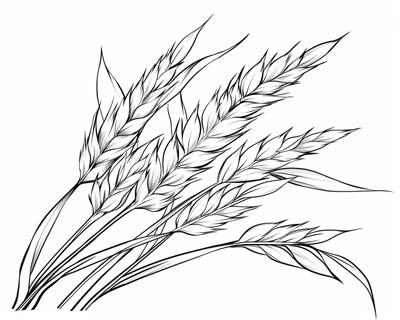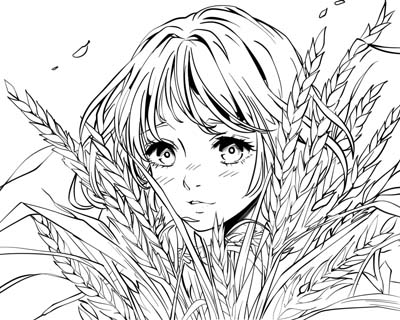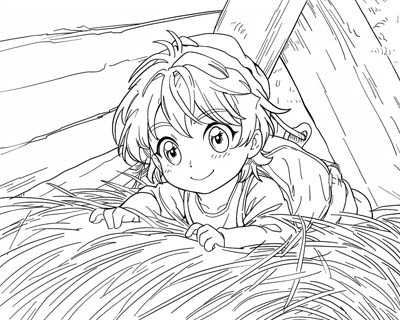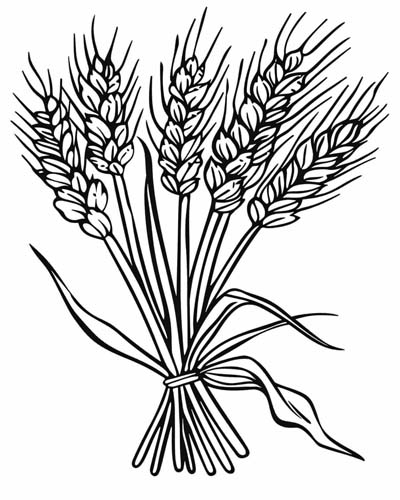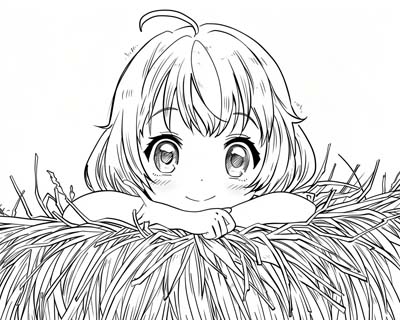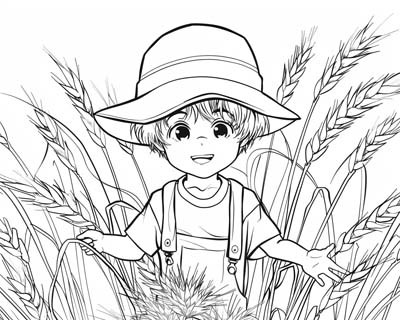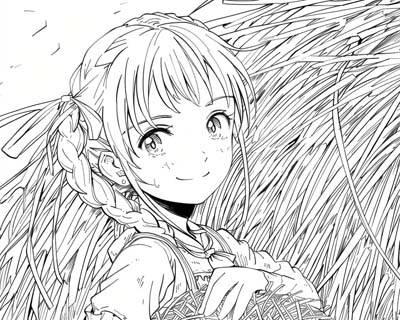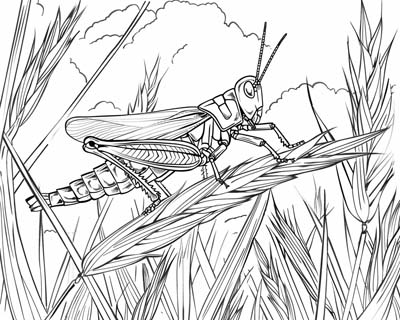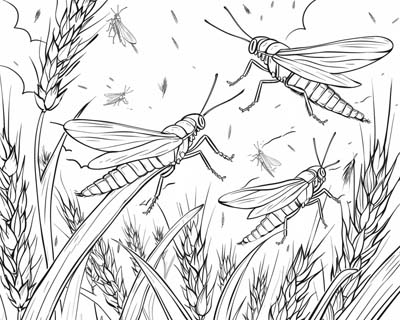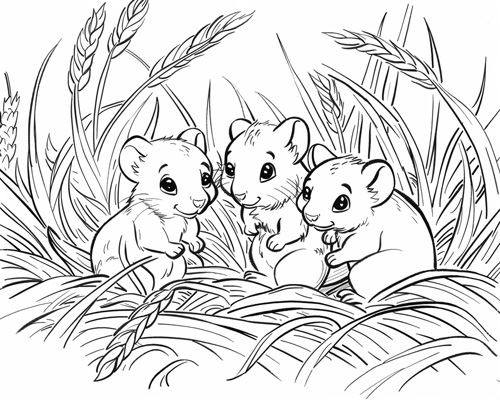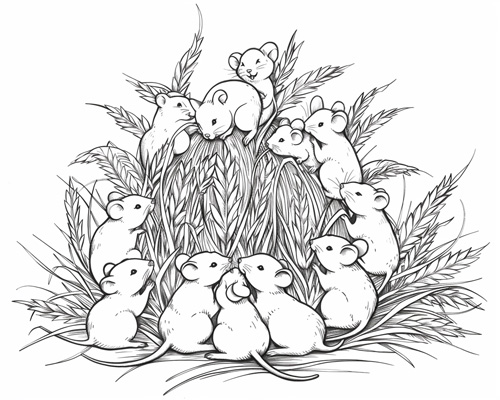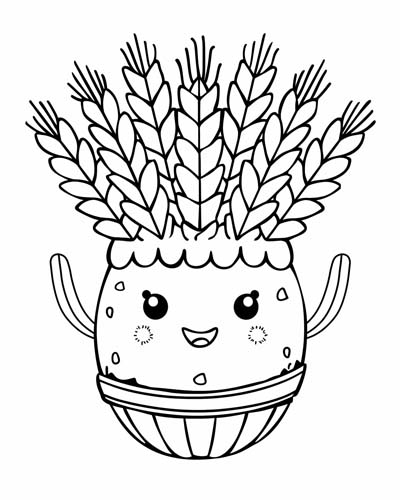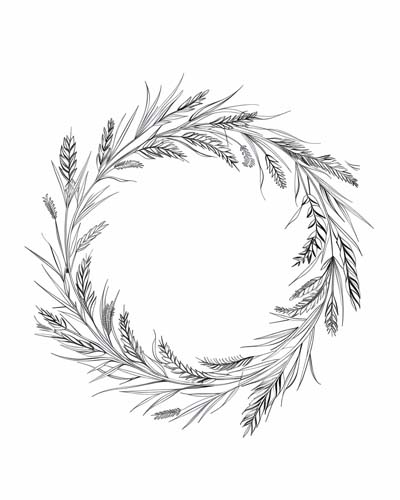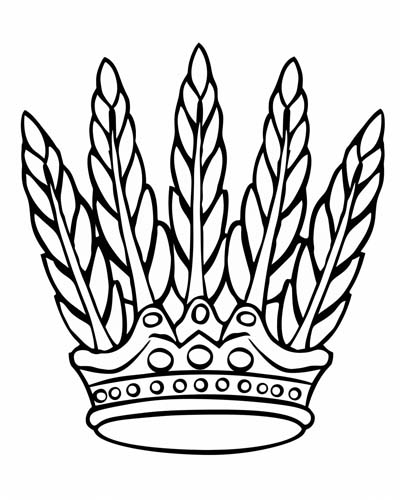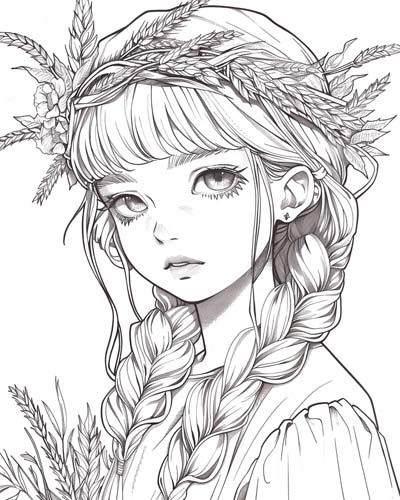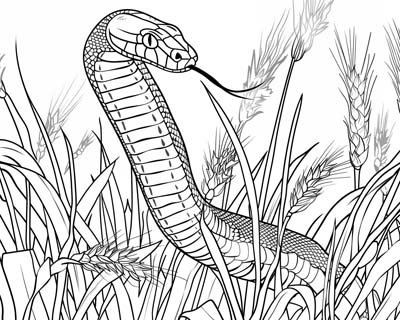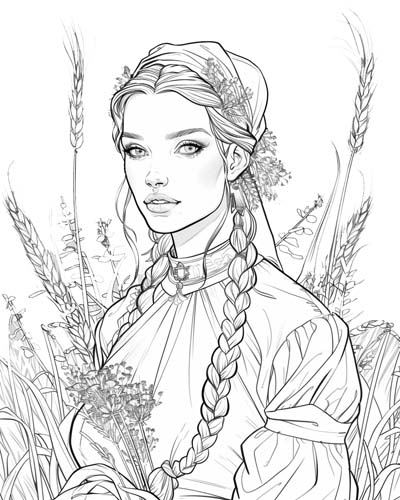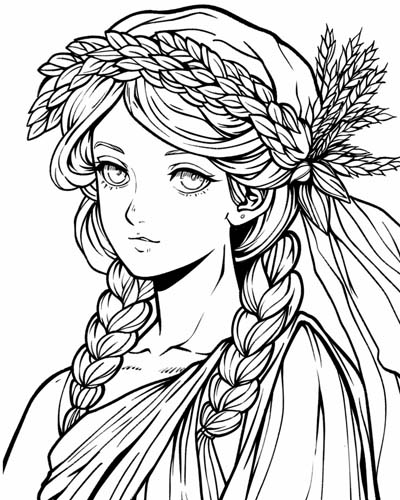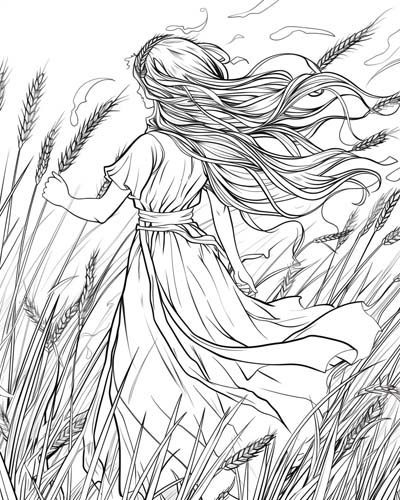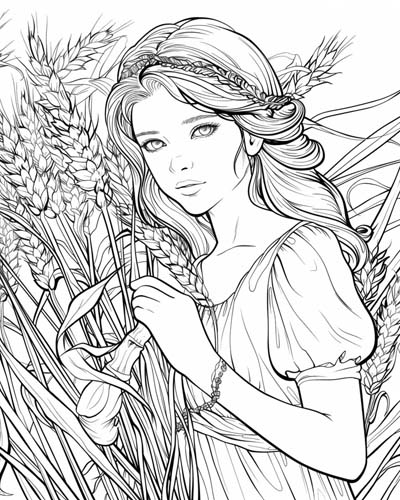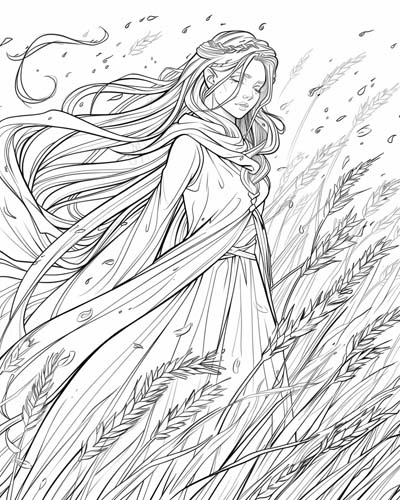Coloring Pages for Kids
Wheat Coloring Pages
Welcome to our Wheat coloring pages section.
Wheat, a staple crop and symbol of abundance, plays a vital role in agriculture and food production worldwide. Tall stalks of golden wheat sway gently in the breeze, creating vast, picturesque fields that stretch to the horizon. During harvest time, the landscape is alive with activity as farmers gather the ripe grain. Each stalk of wheat bears a head filled with kernels, the source of flour for bread, pasta, and countless other foods. The scenes in this collection showcase the beauty and importance of wheat, from the lush green shoots in spring to the golden waves ready for harvest, celebrating the life cycle and significance of this essential crop.
Harvest time is a period of hard work and celebration as farmers gather the fruits of their labor. Combining wheat involves the use of large machines called combines, which efficiently cut, thresh, and separate the grain from the chaff. This process marks the culmination of months of planting and nurturing the crops. The golden fields, ripe and ready, are a testament to the dedication and effort invested throughout the growing season.
Pests like grasshoppers and locusts can be a significant threat to wheat fields, causing extensive damage and loss of crops. These insects are known for their voracious appetites, capable of consuming large amounts of vegetation in a short period. Grasshoppers, with their powerful hind legs, can quickly invade and spread across fields, while locusts can form massive swarms that devastate entire regions. The impact of these pests on wheat production is profound, leading to reduced yields and economic hardship for farmers.
Mice can pose a substantial threat to grain storage, leading to significant damage and loss of crops. These small rodents are notorious for their ability to gnaw through various materials to access food supplies. Mice, with their rapid reproduction rates, can quickly infest storage areas, contaminating and consuming large quantities of grain. The presence of mice in granaries not only results in direct loss of stored crops but also poses health risks due to contamination. The economic impact on farmers and food storage facilities is considerable, highlighting the importance of effective pest control measures.
Meet the Harvest Guardian, a whimsical egg-shaped figure cherished by all who love the autumn season. Adorned with a majestic crown of golden wheat upon its head, this magical being embodies the spirit of abundance and prosperity. Each strand of wheat in the crown has been carefully gathered from the golden fields, symbolizing the bountiful harvest and the hard work of the season. The Harvest Guardian's smooth, glowing shell and gentle presence bring a sense of peace and fulfillment, ensuring that every stalk of wheat grows strong and tall, and that the community will have enough food to sustain them through the colder months.
The wheat wreath is a beautiful symbol of the harvest, crafted from the finest golden strands gathered from the fields. Worn by the Harvest Guardian, it represents the bountiful abundance of the season and the fruits of the hard work and dedication that go into nurturing the crops. Each strand of wheat in the wreath is a testament to the richness of the earth and the promise of sustenance. Hanging a wheat wreath on your door or in your home brings a touch of this natural bounty indoors, serving as a reminder of the blessings and prosperity that the harvest season brings.
The wheat crown is a regal adornment, symbolizing the height of the harvest season's glory. The wheat crown not only signifies the abundance and success of the harvest but also honors the connection between the land and its caretakers. Wearing a wheat crown, or even displaying one, is a tribute to the hard work, dedication, and gratitude that define the autumn season, celebrating nature's generosity and the cycle of life.
Ancient gods and goddesses related to Wheat:
Renenutet (Egyptian Mythology): Renenutet is an Egyptian goddess associated with the harvest and nourishment. She is believed to protect the fields and granaries, ensuring a bountiful harvest and the prosperity of the people. Often depicted as a cobra or a woman with a cobra's head, Renenutet's protective qualities extend to safeguarding the crops from pests and ensuring their growth. She is also linked to the concept of destiny and the nurturing of life, playing a crucial role in the sustenance and success of the community. Offerings and rituals dedicated to Renenutet were performed to gain her favor and secure the fertility of the land. Her presence in Egyptian mythology underscores the importance of agricultural deities in ancient societies, reflecting the dependence on the earth's bounty for survival and prosperity.
Mokosh (Slavic Mythology): Mokosh is a Slavic goddess of fertility, earth, and harvest. She plays a vital role in the agricultural cycle, ensuring the fertility of the land and the abundance of crops. Mokosh is often depicted holding a sheaf of wheat, symbolizing her close connection to agriculture and grain. She is revered for her ability to protect and nurture the fields, bringing prosperity and sustenance to her people. In addition to her agricultural aspects, Mokosh is also associated with women, childbirth, and weaving, embodying the nurturing and life-giving qualities of the earth. Her worship includes rituals and offerings aimed at securing a bountiful harvest and the well-being of families. Mokosh's presence in Slavic mythology highlights the deep respect and reliance on the earth's fertility and the cycles of nature that sustain human life.
Ceres (Roman Mythology): Ceres is the Roman goddess of agriculture, grain crops, fertility, and motherly relationships. As the counterpart to the Greek goddess Demeter, Ceres holds a significant place in Roman religion and society. She is often portrayed with symbols of the harvest, such as sheaves of wheat or cornucopias, reflecting her role in ensuring a plentiful harvest and the nourishment of the people. Ceres is also associated with the growth of all plant life and the cycles of the seasons. The word "cereal" is derived from her name, highlighting her enduring influence on language and culture. Festivals in her honor, such as the Cerealia, involved games and offerings to ensure the continued fertility of the land. Ceres embodies the nurturing aspects of the earth, supporting both the physical and spiritual well-being of the Roman people.
Sif (Norse Mythology): Sif is a Norse goddess known for her connection to fertility, family, and the earth. Her golden hair, often interpreted as a symbol of ripe wheat fields, highlights her association with agriculture and grain. Sif is revered for her role in promoting the fertility of the land and ensuring a good harvest. As the wife of Thor, the thunder god, she also represents the union of the natural elements necessary for successful farming--rain and earth. Sif's presence in Norse mythology emphasizes the importance of agricultural cycles and the reverence for deities who could influence these vital aspects of life. Her story and attributes celebrate the beauty and abundance of the earth, as well as the sustenance it provides to humankind.
Demeter (Greek Mythology): Demeter is the Greek goddess of agriculture, harvest, and fertility. She is a central figure in Greek mythology, revered for her role in ensuring the growth and nourishment of crops. Often depicted with sheaves of wheat, Demeter symbolizes the life-giving aspects of nature and the earth's bounty. Her story is closely tied to the changing seasons, particularly through the myth of her daughter Persephone, whose annual descent to the underworld and return to the earth corresponds with the cycles of planting and harvesting. Demeter's influence extends beyond agriculture to encompass the nurturing of family and community, making her a beloved and vital deity in ancient Greek culture. Festivals and rituals dedicated to Demeter, such as the Eleusinian Mysteries, celebrated her contributions to human sustenance and the mysteries of life and death.


